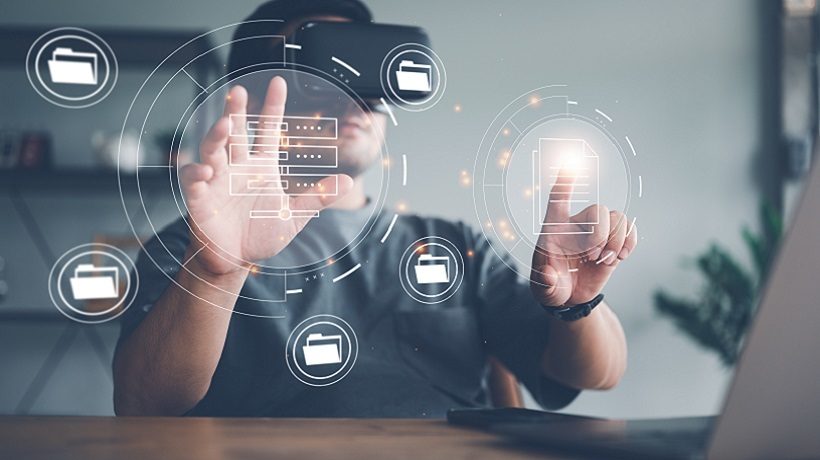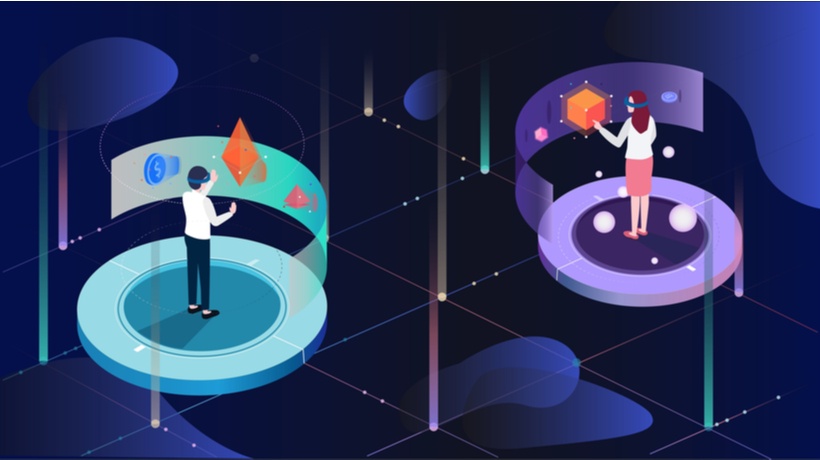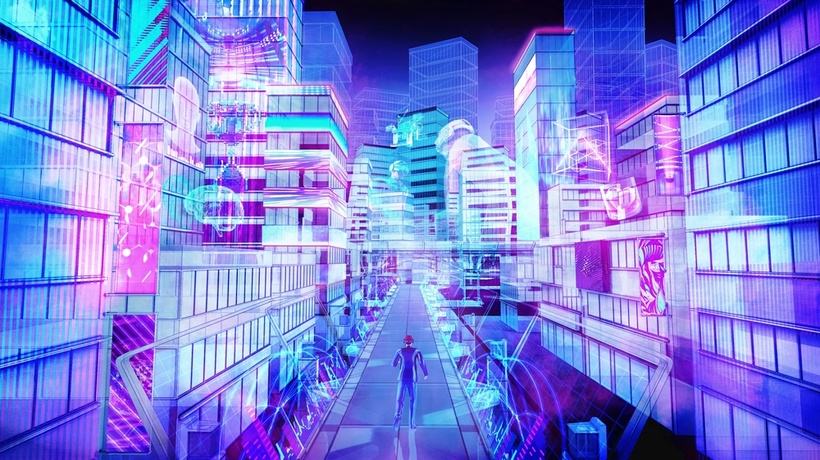What Might The Metaverse Be Like In 20 Years?
The world of the internet has changed drastically in recent years. The things that were just imagination now work in the world around us. Think of robots, Artificial Intelligence (AI), smartphones, smart houses, Augmented Reality (AR), and various other things surrounding us; each is a beautiful example of the power of technology. Technological advances have offered individuals a better way to communicate with the people around them, including through social media platforms like Facebook, WhatsApp, Instagram, and others.
Recently, Facebook launched its metaverse, which is a step ahead in the world of technology. The metaverse is a technology that can help us feel connected with others, even when we are physically far away. Though the scenarios that a metaverse develops are not quite real, the immersive experience it offers is fascinating, which is why it's the future of the internet.
What will the future of the metaverse be? How will it work in 2040? Various questions revolve around the metaverse, and we are here today to offer insight. So, let us find out more about metaverse here.
What Is The Metaverse?
The first question that we need to find an answer to is, what is the metaverse? The metaverse is a virtual world that exists in addition to the actual one. "Verse", here, signifies "the universe", and "meta" means "beyond." Though there are various theories about it, each defines the metaverse uniquely and differently. The term "metaverse" refers to a vast change in how we connect and communicate utilizing technology in this rapidly expanding global society, not to any particular form of technology. And it's perfectly feasible that the metaverse will age just as much as the specific technology.
In general, the technologies that make up the metaverse can include Augmented Reality, which blends elements of the digital and physical worlds, and Virtual Reality (VR), characterized by persistent virtual environments that continue to exist when you're not playing. It is optional, though, for users to access those environments only through VR or AR. So, there are three different ways to look at the metaverse in theory:
1. The Metaverse Is A Product Or Service
One of the definitions of the metaverse explains it as a product or service. It suggests that the metaverse includes the seven core attributes that define a product, including persistence, synchronicity, and interoperability.
2. The Metaverse Is A Place
The second definition explains the metaverse as a place where people can connect. The metaverse is where people can connect, share, interact, and transfer themselves into various virtual environments on a digital platform.
3. The Metaverse Is A Moment
The last explanation is that the metaverse is just a point in time. The metaverse is when the online identities, experiences, relationships, and assets in our digital life become meaningful and memorable for us.
The Current Scenario Of Metaverse Use
If we look at the current use of the metaverse, it is a Virtual Reality used as a digital escape. This digital reality combines AR and VR, allowing you to touch, see, and feel anything in the virtual dimension, irrespective of location. In the current scenario, the metaverse is used for many purposes, including creating, buying, and selling goods. In other words, the metaverse allows you to create a persona you can take anywhere in the virtual world. Currently, Virtual Reality focuses on creating a digital sense of presence. But the metaverse has potential for various sectors including education, gaming, retail, and others.
You can participate in events, purchase virtual property, design virtual clothing, make money, make friends, raise virtual animals, manufacture and sell digital art, and more, in the metaverse. The metaverse is prepared to change the workplace in the following ways once it has rendered interactive distant and hybrid work experiences:
- New and engaging ways for teams to work together
- Better, new digital, and AI-capable co-workers
- Acquisition of knowledge through virtualization
- Expanding the metaverse economy with new job roles
Understanding Working In The Metaverse
While in theory, there are the three aspects of the metaverse as detailed above, there is one that is even more important, and the point we all need to focus on. The metaverse in the workplace is a crucial aspect that is going to impact the future and how people are going work in the time to come.
When we talk about the workplace, it's more than the physical location of work; today, the workplace is quite broad. Most jobs have transformed into remote jobs, and people can efficiently work from their desired location. This is what the metaverse is going to enhance extensively. Imagine you are in the Maldives, enjoying a sunny day on the beach and working. What if you can report to your office in London or New York from where you are sitting? This Virtual Reality is a glimpse of the metaverse.
The emergence of new digital, AI-enabled colleagues, the acceleration of learning and skill acquisition through virtualization and gamified technologies, and the development of new immersive forms of team collaboration are just a few of the significant ways that the metaverse appears to be changing the nature of work. Through the metaverse, employees can communicate socially, establish teams, conduct training, and work together electronically. The real-time engagement that the metaverse offers people is the basic reason behind accepting it in the workplace. But before we see what one can expect from the metaverse in the future, it's essential to know what the metaverse is today.
5 Ways Working In The Metaverse Will Shape The Future
The working environment has changed a lot. The hybrid model has pushed people to work with remote collaboration, engagement, and access the business or job needs from anywhere in the world. Business leaders acknowledged that conventional business practices are no longer valid in the post-pandemic era. Innovation propels forward-thinking businesses to new heights and displaces those unable to adopt new technologies. The metaverse can promote cooperation, enable cooperation between workplaces, and show results based on action. While the metaverse is playing an essential role in the entire process, it is going to change the world of work in the following significant ways:
1. Immersive Ways For Team Collaboration
The future of the workplace depends more on how perfectly colleagues can collaborate using virtual means of communications. The metaverse is a great option that will offer a smooth platform. Allowing you to use your avatar to collaborate and communicate with the team will make remote work smoother. The simplicity of use and multiple applications will open up new dimensions to rethink workplace diversification. The main things that the metaverse will facilitate in terms of collaboration include the following:
- Prompt adjustments to save time and energy
- Replication of the person's physical presence during brainstorming sessions
- Feedback offered and queries raised in real time
- Valuable to bring people together
2. Offering AI-Enabled Colleagues
When you work virtually using the metaverse, there will be more than just co-workers. Your avatars in the digital world will work with AI-powered bots resembling humans. Now, these bots will be an excellent replica of humans, serve as helpers, and work smoothly. The bots will efficiently do monotonous and repetitive tasks that humans currently carry out. When this divergence occurs, individuals will have the time to learn new skills and use them for the better. When communicating with clients and co-workers, the metaverse offers a real human element. Teams must collaborate well to grasp each person's position and objectives while working remotely.
3. Learning In Better Modes
Digital coaches with AI capabilities can help with staff training and provide career advice. 3D displays will make every object in the metaverse interactive. Virtual-world training can offer advantages over traditional instructor- or classroom-based training.
4. New Roles To Come Up
The biggest fear with every new technology coming up in the market is consistently linked to jobs. People fear that they might face tough competition and be out of a job with technology taking over. This scenario is not valid. No matter how advanced the technology that is implemented, humans are needed to operate and run it smoothly. But the metaverse will take this a step further and open up opportunities for people to work on new and better job profiles. Some excellent profiles include those of metaverse research scientist, metaverse planner, metaverse safety manager, metaverse storyteller, world builder, and others.
5. Customer Service Support
The metaverse will be a great option when it comes to customer support. It will help the customer support staff create a set of guidelines to help the customers using a standard process. Plus, when AI-based bots are included in the process, there are chances that the issues and queries would be solved by them only, reducing the wait time. Sometimes, customers also need training to use the product, especially when it's linked to technology, and the metaverse will allow customers to explore the solution by interacting with it in the virtual world. While these things are how the metaverse will change the workplace in the future, all this can be summarized into the potential benefits, which include:
- Minimizing the drawbacks of working remotely
- 3D visualization and problem-solving
- Limited reliance on hardware
- No boundaries in terms of size and place









